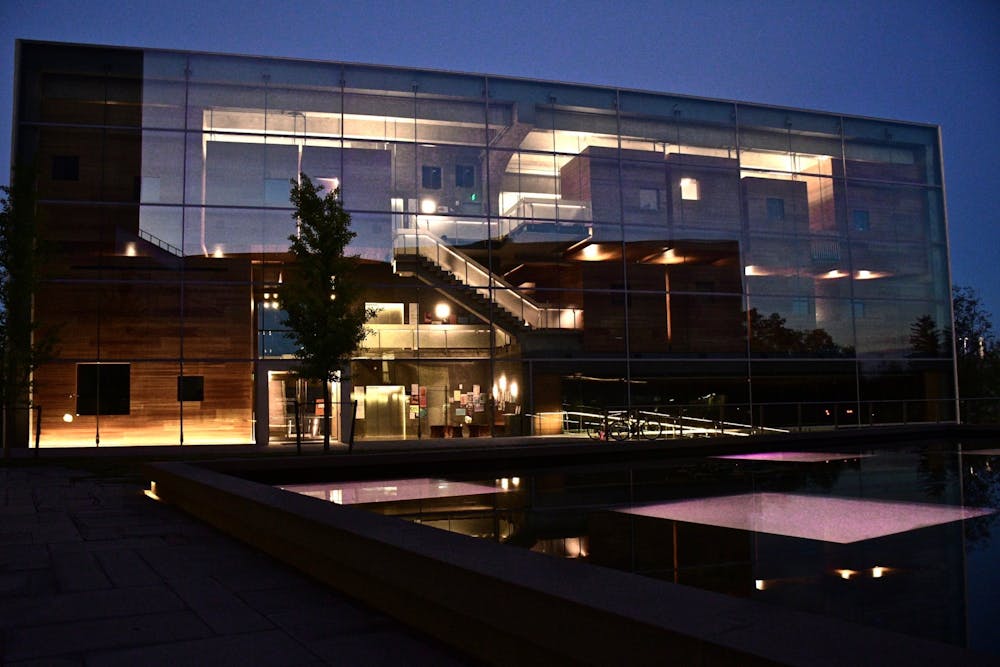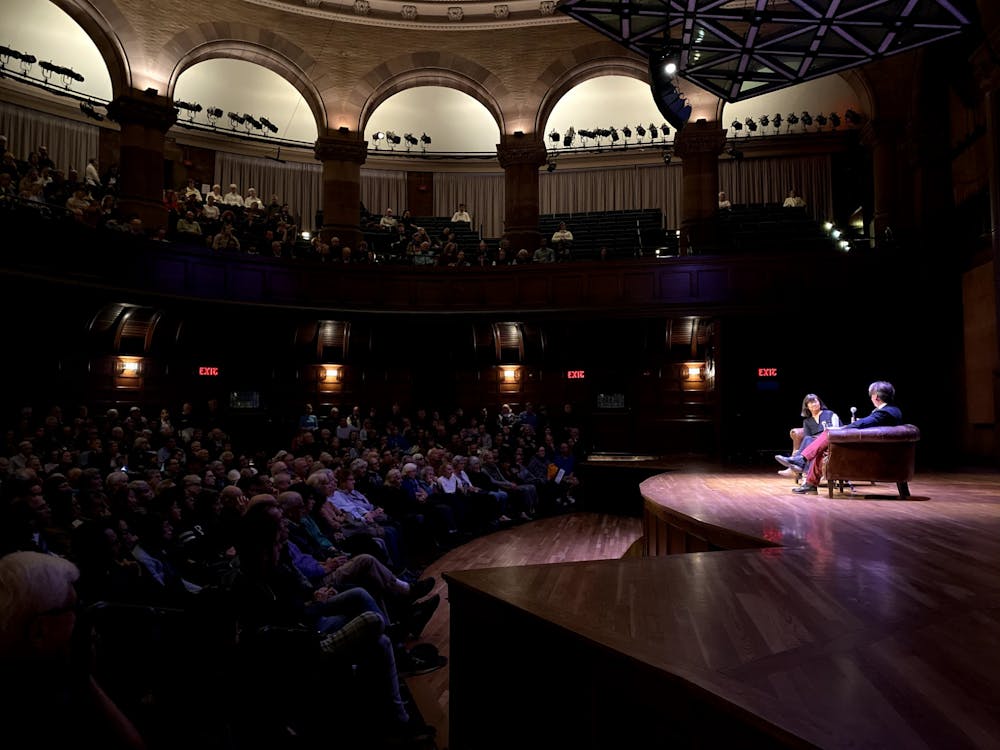Before the Lewis Center for the Arts was even built, Maya Lin had considered creating art around the site. Now, several years later, she has finally completed her two contributions, “Princeton Line” and “Einstein’s Table,” to the University’s campus.
Both installations are adjacent to the buildings of the Lewis Center.
On Tuesday, Lin — who designed the Vietnam Veterans Memorial in Washington, D.C., and has won numerous awards, including a 2016 Presidential Medal of Freedom — discussed the installations, as well as her earthworks and environmental activism, in Richardson Auditorium. James Steward, Director of the Princeton University Art Museum, joined her in conversation.
Lin hopes that her art on campus reminds people to slow down.
“For me,” she said, “the ‘Princeton Line’ is about getting to know what’s going on right underfoot.”
Much of her talk focused on understanding the surrounding environment through her earthworks and water tables.
As Steward said, Lin asks “us to contemplate our relationship with the physical world around us, whether it’s natural or shaped by the human hand.”
Lin’s continuing global project “What is Missing?” tracks the world’s lost species. As its website states, the project “show[s] us how to reimagine our relationship to the natural world and showcas[es] how we could live in ways that balance our needs with the needs of the planet.”


The Effron Music Building of the Lewis Center for the Arts.
Photo Credit: Jon Ort / The Daily Princetonian
Because of her emphasis on the environment, Lin’s work is site-specific. When she initially considered the University campus many years ago, Lin turned down a project for the Andlinger Center for Energy and the Environment because she was so drawn to the hill outside the Lewis Center.
“I tend to get drawn to spaces a little bit out of the way,” Lin explained.
She has gained experience working with natural forms for her seven water tables, one of which, “Einstein’s Table,” is now outside the Lewis Center.

“Einstein’s Table,” Lin said, is meant to imitate a black hole. Lin laughed, noting the coincidence that photographs of a black hole validated Einstein’s black hole theory during her creation of the table last year.
The table, made of Virginia Mist stone, has a “Milky Way quality” that invokes Einstein’s theories and allows the water to slide down almost silently, according to Lin. The choice of stone required as much detail as the rest of Lin’s work.
She participated in every step of the process, including the manipulation of many models before working on-site.
Most important to Lin is remembering that art, unlike architecture, requires constant adjustment.
“I feel that if I do not continuously modify it and adjust as I am in the field, then it’s going to be a little flat. I need to be out there, I need to be really relating to the site itself in ways that you can’t predict,” she said.
To conclude the event, Lin spoke to the audience about humanity’s deleterious impact on the environment.
She offered some practical solutions, such as modifying diet and energy consumption, as well as natural solutions. She also reminded the audience to remain optimistic, in light of the fact that more people than ever are acknowledging humanity’s role in climate change.
“We have to vote for the people who believe in and are doing something about climate change,” she said, to applause.








